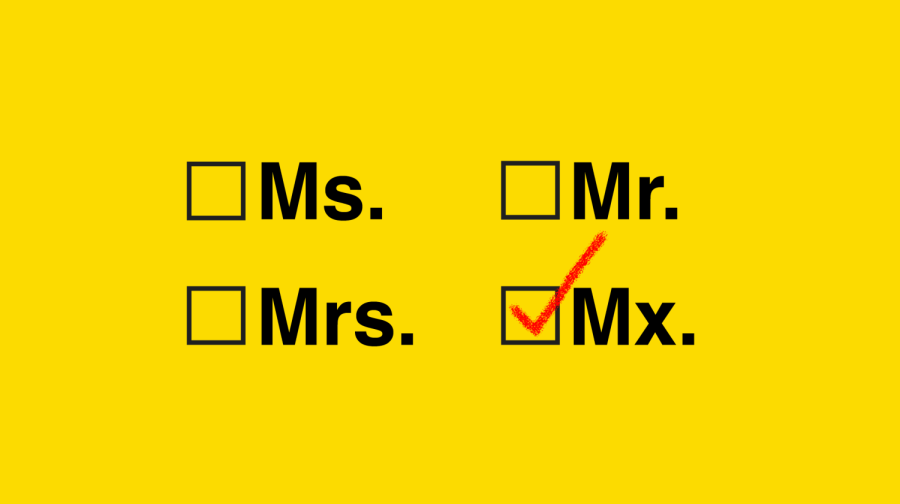Gender Neutral Pronouns in Writing
A Guide to Inclusivity
January 24, 2022
The idea of gender neutral pronouns and their usage may seem overwhelming to some, but in actuality they are easy to understand and apply, even in academic settings. When using them, it is important to note that gender neutral pronouns, most commonly singular they/them pronouns, are ways to express gender identity that falls outside of what most people know as the “binary.” The idea of being non-binary or agender is easier to grasp after recognizing that sex and gender are not the same.
There are three sexes: male, female, and intersex. Gender however, exists on more of a spectrum and cannot be contained by only two categories. Gender is the social construct that humans created around sex. This being said, many people feel that they do not identify with male or female, and may feel as if they are somewhere in between or wholly different. Using pronouns that reflect their identity makes non-binary and gender non-conforming people more comfortable.
Even so, many people may be confused on how to use gender neutral pronouns, which is completely understandable. Others may shy away from them in academic papers. When writing in MLA format, the MLA website states that not only does it allow, but it also encourages the usage of a person’s preferred pronouns, including the singular “they.” For example: “Jules is writing their research paper on Jane Austen’s Persuasion.” This is not to be confused with a generic use of singular “they.” Both AP and MLA style permit the usage of “they/them” if someone’s gender is unknown or if those are their preferred pronouns.
Outside of “they/them,” there are other gender neutral pronouns, often referred to as “neopronouns.” The most common of these include “xe/xem/xir” or “ey/em/eir.” While they may look scary, they are actually extremely easy to use. A few examples include: “Xe left xir wallet outside, so I will go find xem,” or “Ey wanted to come with us, but ey left eir bag at home. I’ll go help em find it.” Neopronouns are not typically used, however, if someone feels more comfortable with them, it is important to try to use them. In an academic setting, they may be confusing and do not have much of a place in papers. If in doubt, “they/them” will always suffice. Another interesting development in gender neutral pronouns recently is the honorific “Mx.” in replacement of “Mr.” or “Mrs.” This serves to provide a gender neutral alternative to the other more common honorifics and may be seen when filling out certain documents. This, however, is not mentioned in MLA style and may not be approved.
Gender neutral pronouns can often seem pointless or odd, but for people struggling with gender identity, they provide a form of expression that helps make people feel comfortable. Inclusivity is something that academic spaces often lack, specifically for transgender or non-binary people. Using the correct pronouns to refer to people does not diminish the overall meaning of a writing, but rather allows for others to present themselves in a way that makes them happy. If in doubt, use “they/them,” with the exception being an academic paper written in MLA format. In that case, be sure to only use “they/them” if that is the pronouns that person specifically uses or if referring to an unknown person.










